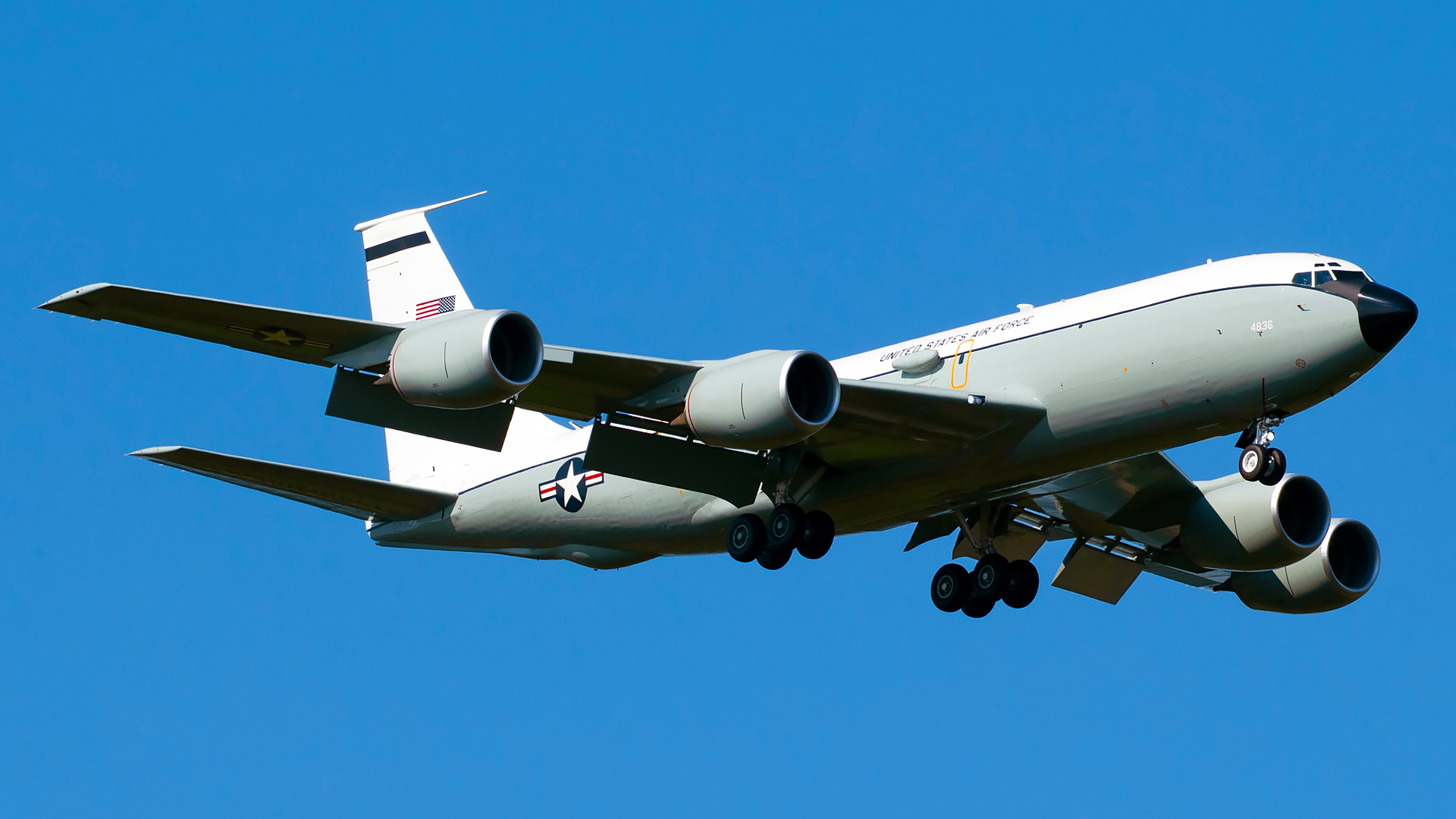The first of what will become the U.S. Air Force’s fleet of three “nuke-sniffing” planes completed its pioneering flight test in Greenville, Texas this week. The KC-135R, with the serial number 64-14836, now converted into the WC-135R Constant Phoenix configuration, is scheduled to be delivered next month and will carry out operations that consist of collecting air samples to screen for the presence of notable nuclear materials. Beyond taking baseline readings around the globe, the Constant Phoenix jets can be deployed to monitor nuclear weapons tests and look for and track nuclear leaks and other nuclear incidents. In doing so, it can provide critical intelligence and help map and mitigate potential fallout.
Boneyard Safari, an aviation preservation organization dedicated to memorializing historical moments and objects in aviation history, sent their photography team to the L3Harris Technologies facility in Greenville where the aircraft is being converted to capture the images of the flight test included in this article, which can also be accessed on their Facebook photography page. While this airframe is anything but new — this one was built in 1964, nearly 60 years ago — it will serve the Constant Phoenix mission far better than the last remaining and now problem-plagued WC-135W.
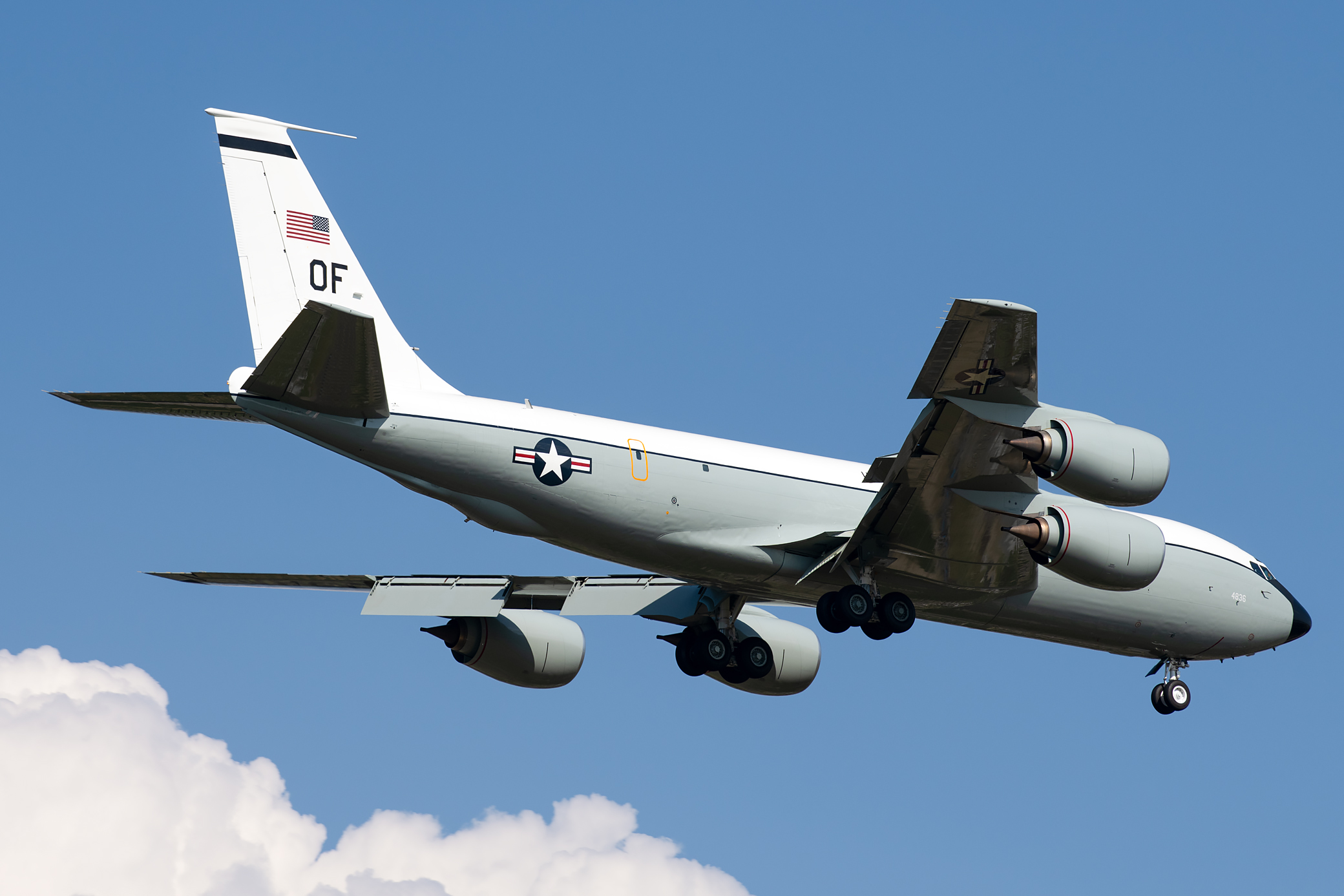
The Air Force’s lone operational WC-135W, which carries the serial number 61-2667, is the last aircraft from a batch of 10 C-135B cargo aircraft that were first converted into WC-135B nuke-sniffers in the 1960s. That fleet steadily shrunk in the following decades, though a small number of the planes remained in service in this role into the 1990s, some of which were upgraded to the WC-135W configuration. By that point, the Constant Phoenix fleet had also been joined by a WC-135C, converted from a Looking Glass EC-135C airborne command post jet.
Only one WC-135W and the WC-135C were still flying the Constant Phoenix mission by 2003. The aging WC-135C, which had gained the nickname “Lucifer’s Chariot,” a moniker not given out of love, was officially retired in November 2020, leaving 61-2667 as the only active Constant Phoenix aircraft.
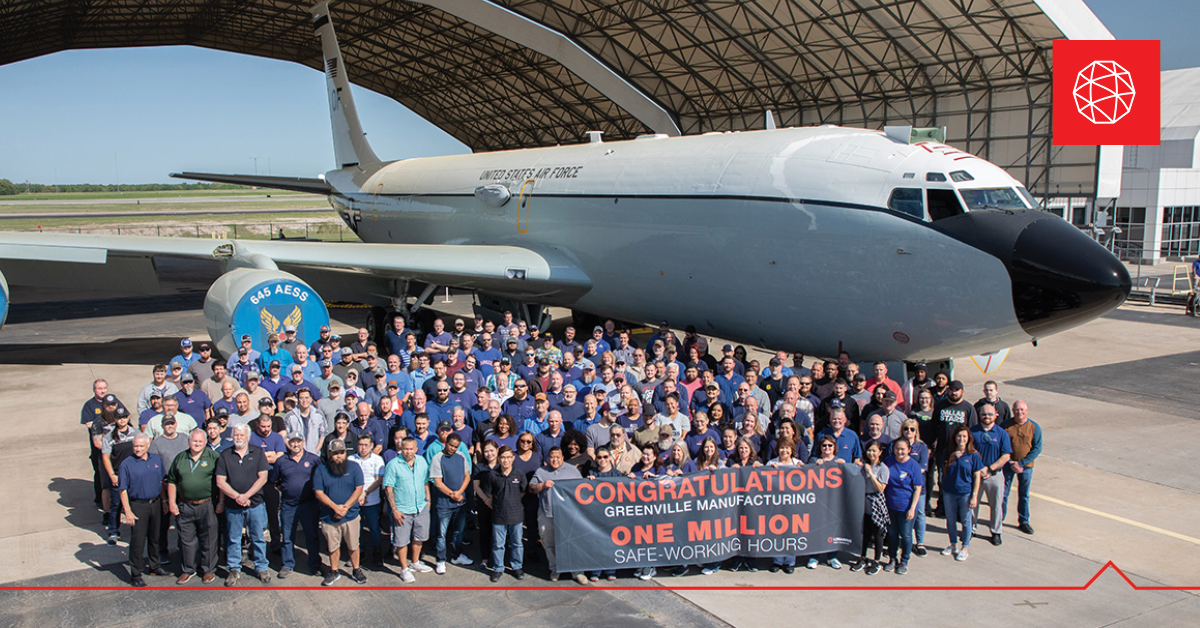
The WC-135R conversion project was officially announced in 2018, and the following year The War Zone reported on the Air Force’s Fiscal Year 2019 budget request, which included a proposed $208 million to modify the KC-135R tankers. In the budget request, it was explained that the WC-135Rs would carry the same sensor package as the existing WC-135s, but that the aircraft would be on par in their underlying base configuration with the most modern C-135 variants in service today, which include the RC-135s.
Most notably, this includes CFM-56 turbofan engines, which are far more reliable, supportable, and efficient than the engines they replaced. The old TF-33 Pratt & Whitney engines were a key drawback that prevented the WC-135Ws from carrying out their missions around the globe reliably, including the enforcement of the Limited Nuclear Test Ban Treaty of 1963, which prohibits nuclear weapons tests or other nuclear explosions underwater, in the atmosphere, or in outer space. The aircraft lacked investment over the decades and become so antiquated and unreliable that a major reputation as to their mission readiness and safety made headlines.
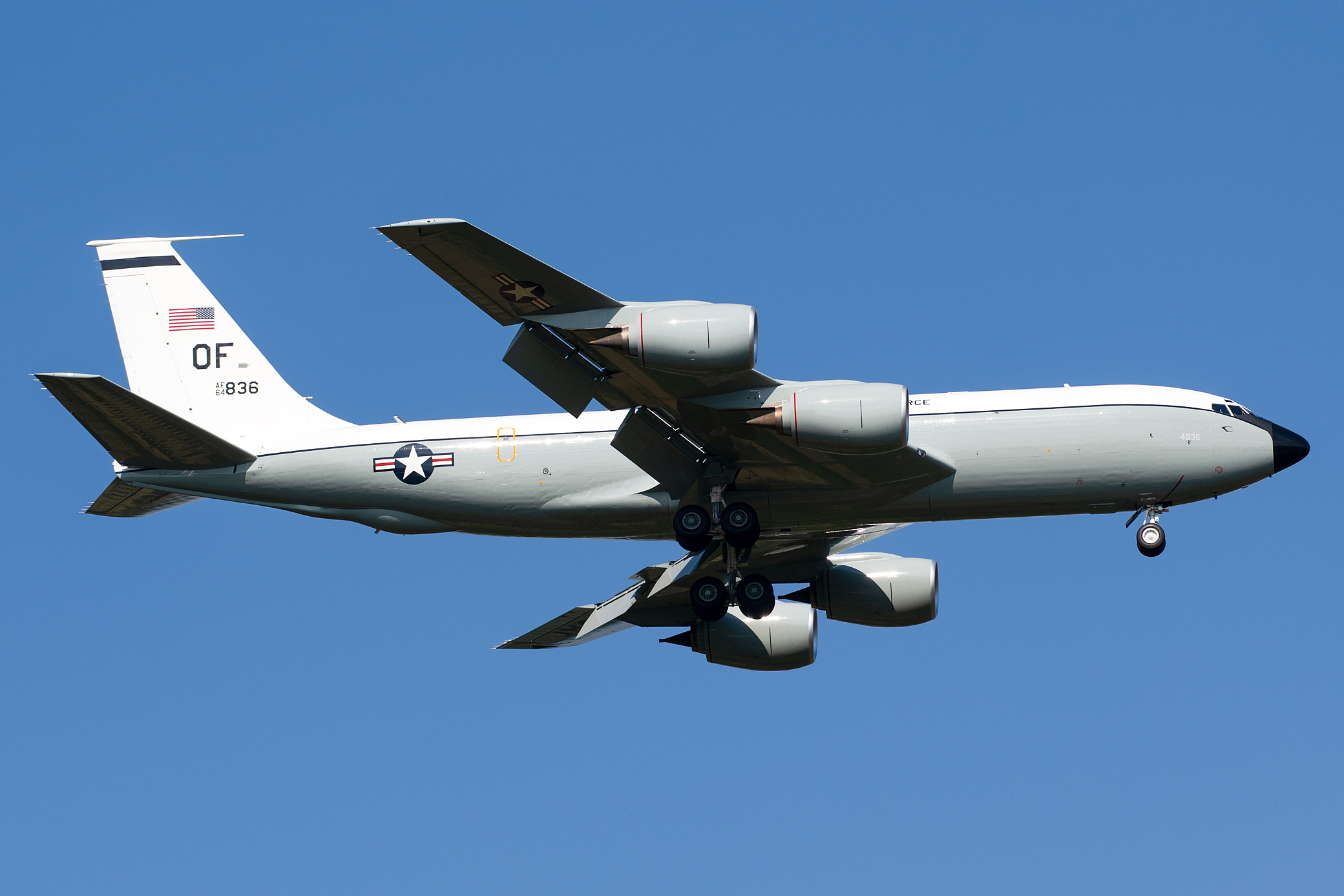
The Air Force also claimed that the conversion was decided to be more cost-effective than extensively modifying the increasingly unreliable WC-135s. The service’s 2019 Fiscal Year budget proposal noted that “these conversions are needed to address airframe viability concerns associated with the aging WC-135W fleet.”
Since its introduction in the 1960s, the WC-135 fleet has surely made a name for itself flying historic missions to monitor high-profile nuclear incidents. In 1986, WC-135s were deployed to assess the Chernobyl nuclear power plant disaster and to monitor the air quality following the catastrophic explosion. In 2011, the last remaining WC-135W was deployed from Offutt Air Force Base in Nebraska to detect radioactive materials in the atmosphere around Japan after the Fukushima nuclear power plant was wracked by a magnitude 9.0 earthquake.
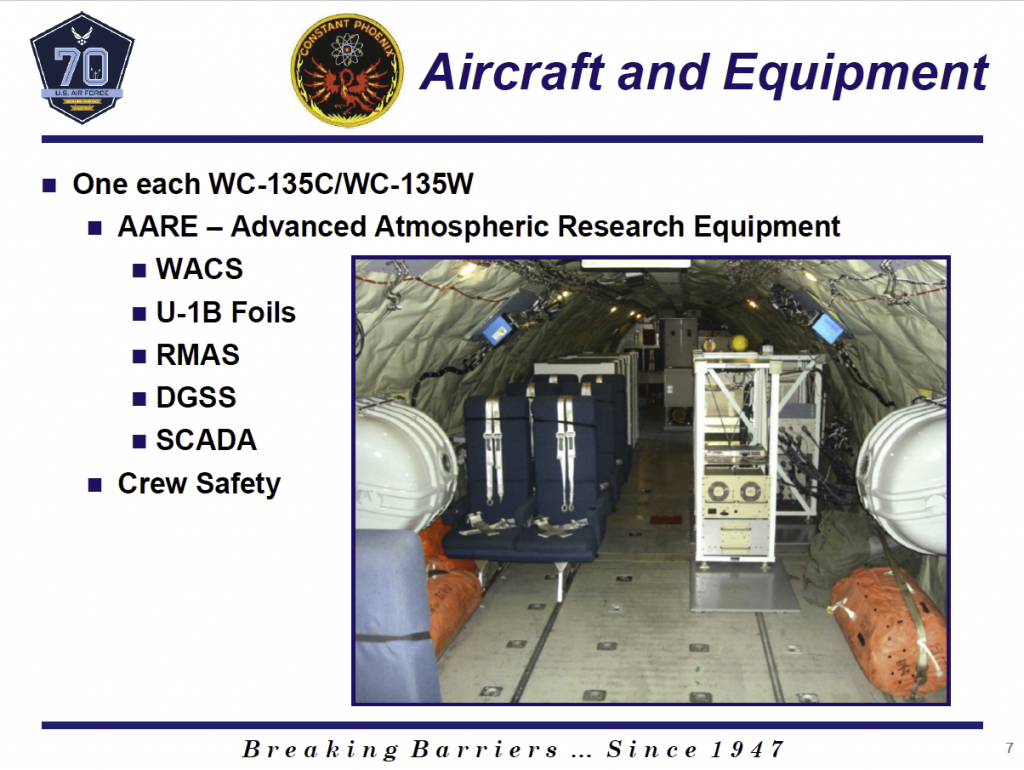
However, its operational history was increasingly laden with failures as the aircraft aged with little investment. For example, Overt Defense reported that the WC-135Ws were said to have had a 40% “break rate” between the years 2015 and 2016. A break rate is described as being a measure of the frequency with which an aircraft experiences a mechanical failure that renders it unflyable for a prolonged amount of time and having one at 40% even in just a year’s time is dismal.
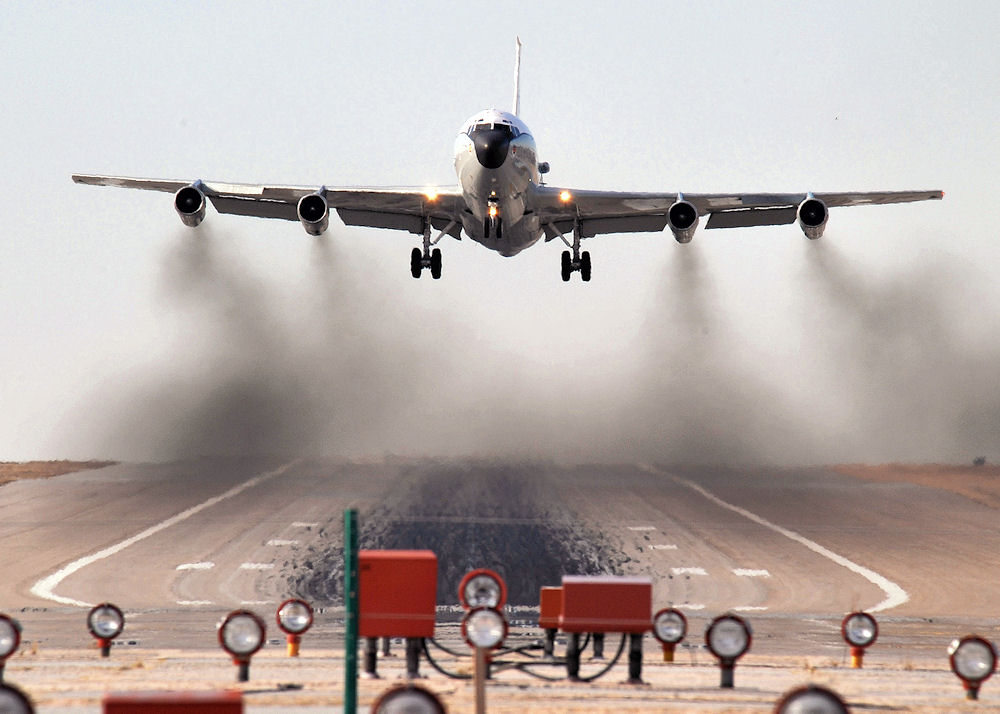
The aircraft once again made headlines after suffering hydraulic failure earlier this year, when the WC-135W was then forced to make an emergency landing at Royal Air Force Base Mildenhall in the United Kingdom. Both of these incidents, among other reasons like the budget constraints mentioned earlier, inspired the KC-135R conversion projects that will eventually birth the new specialized WC-135Rs and conclusively prompt the retirement of the final aircraft in the preceding WC-135W fleet.
Looming nuclear threats from countries like Russia, China, and Iran have been at the forefront of geopolitical tensions for years and North Korea is likely preparing for another nuclear test. The specter of nuclear disaster tied to power generation and stored materials is even more palpable, with Russia’s invasion of Ukraine being a reminder of this. The safety of Ukraine’s nuclear powerplants, as well as Chernobyl, made headlines early on in the conflict and remain a concern, to some degree. So ensuring that the Air Force has reliable and capable atmospheric collection and nuclear reconnaissance aircraft is critical to environmental safety and strategic vigilance.
While anything but new, hopefully, the specialized WC-135Rs will be able to step up to the challenge and perform these important missions for years to come.
Contact the author: Emma@thewarzone.com
